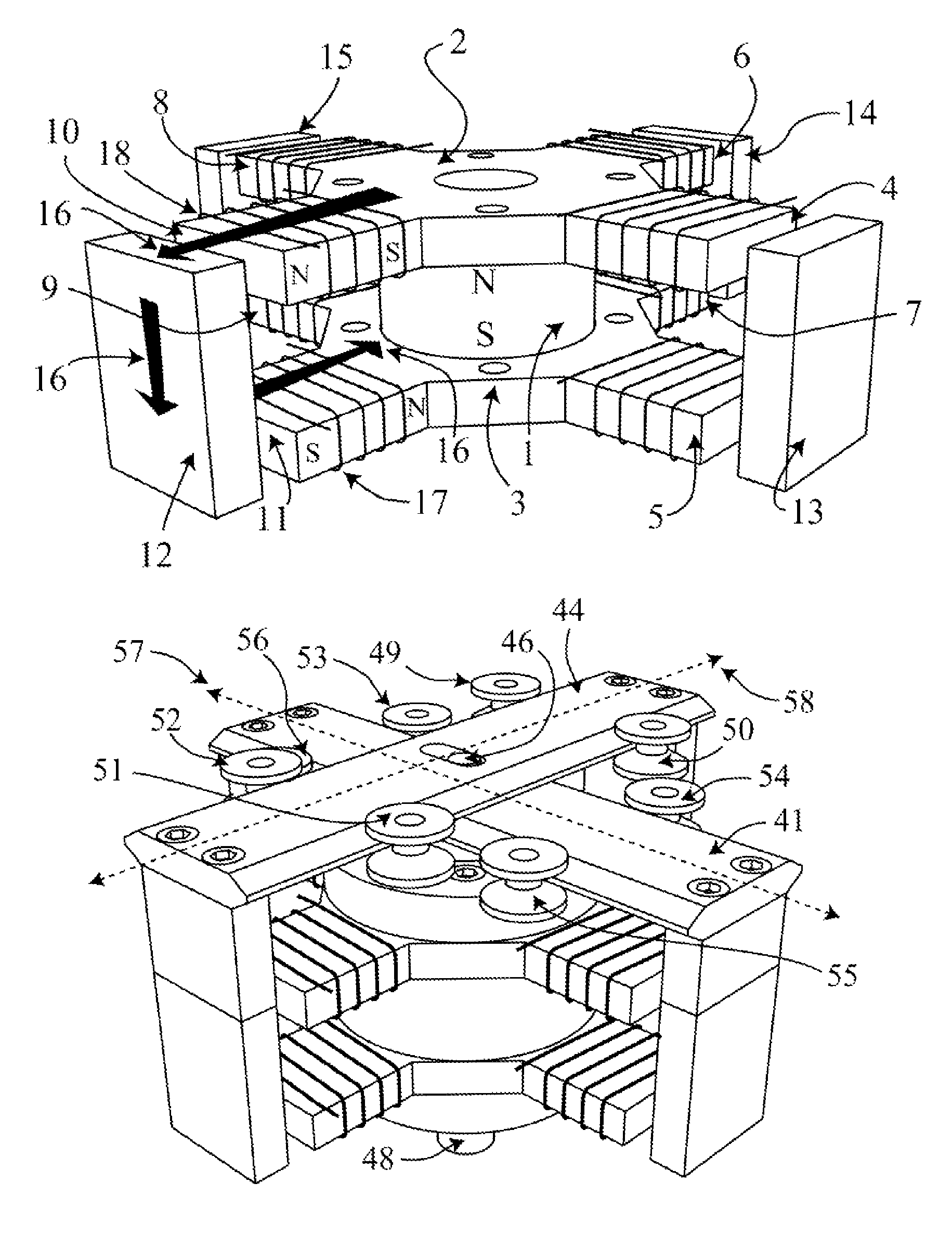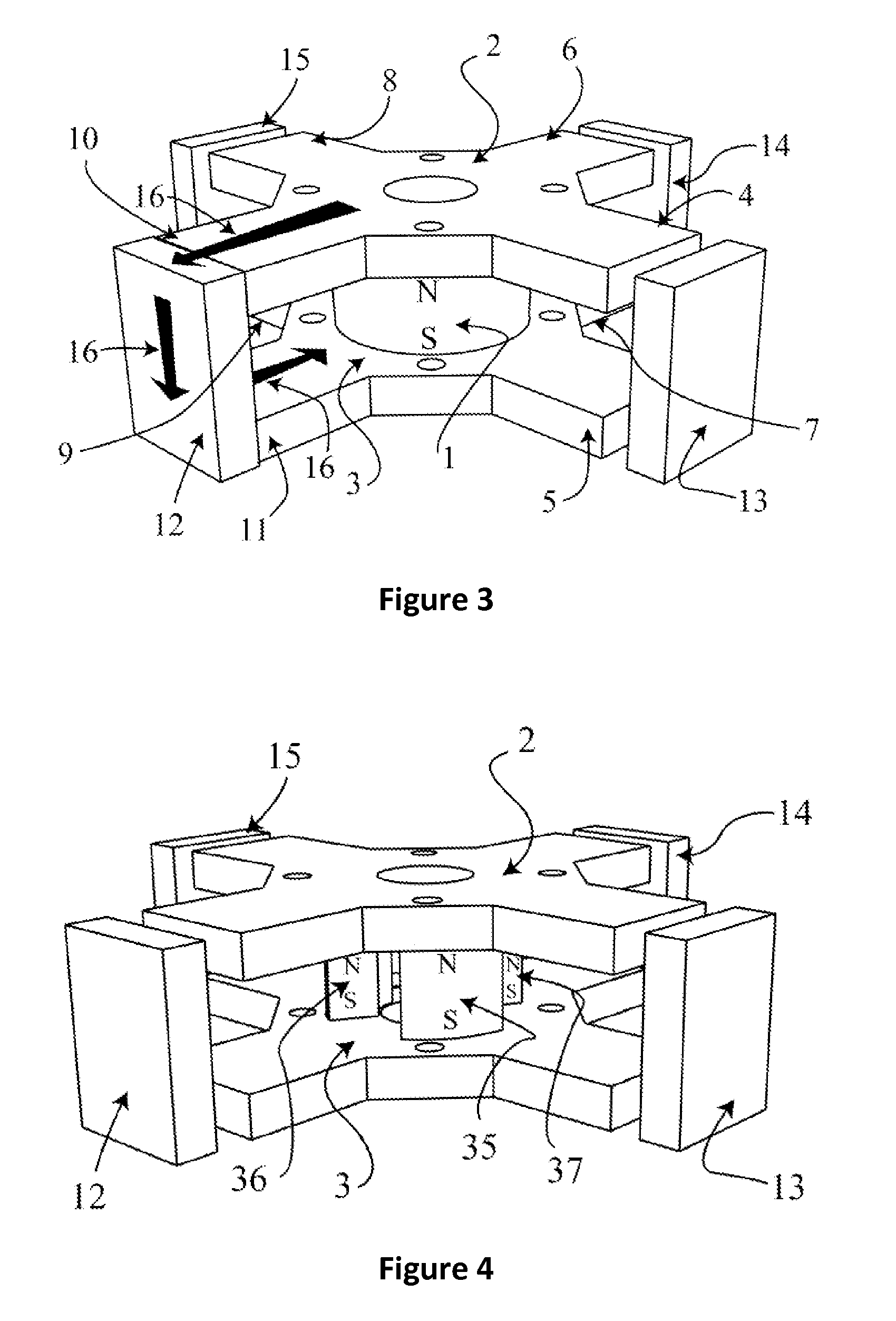High force rotary actuator
a rotary actuator and high-force technology, applied in the direction of magnets, synchronous motors, magnets, etc., can solve the problems of increasing the size of the actuator system, sacrificing the output speed, and causing the actuator to over-proportion the allowable footprint area,
- Summary
- Abstract
- Description
- Claims
- Application Information
AI Technical Summary
Benefits of technology
Problems solved by technology
Method used
Image
Examples
Embodiment Construction
[0023]FIG. 1A shows a stator pole 20 for a conventional linear actuator. The stator pole 20 is composed from a magnetically soft material. A coil 21 is wrapped around the stator pole 20. The coil 21 is energized to magnetically attract the moving armature's pole 22, which is also composed from a magnetically soft material. The forces from the magnetic attraction have two main directions: one force 24 is perpendicular to the direction of motion 23 and the second main force 25 acts at an angular displacement to the direction of motion 23. The vector sum of the forces 24 and 25 forms a resultant or net force 26 acting in the direction of the motion 23, which will always be less than the sum of the forces 24 and 25. As the moving armature pole 22 moves into alignment with the stator pole 20, the force acting perpendicular to the direction of motion 24 becomes the dominant force, which reduces the net force 26.
[0024]FIG. 1B shows a stator pole 27 for a conventional rotary actuator compos...
PUM
 Login to View More
Login to View More Abstract
Description
Claims
Application Information
 Login to View More
Login to View More - R&D
- Intellectual Property
- Life Sciences
- Materials
- Tech Scout
- Unparalleled Data Quality
- Higher Quality Content
- 60% Fewer Hallucinations
Browse by: Latest US Patents, China's latest patents, Technical Efficacy Thesaurus, Application Domain, Technology Topic, Popular Technical Reports.
© 2025 PatSnap. All rights reserved.Legal|Privacy policy|Modern Slavery Act Transparency Statement|Sitemap|About US| Contact US: help@patsnap.com



